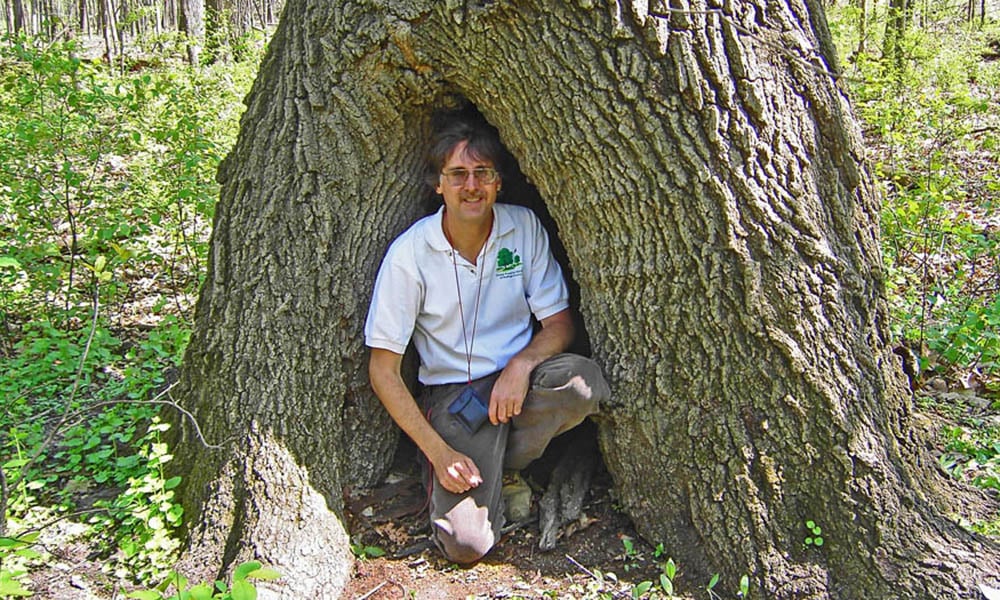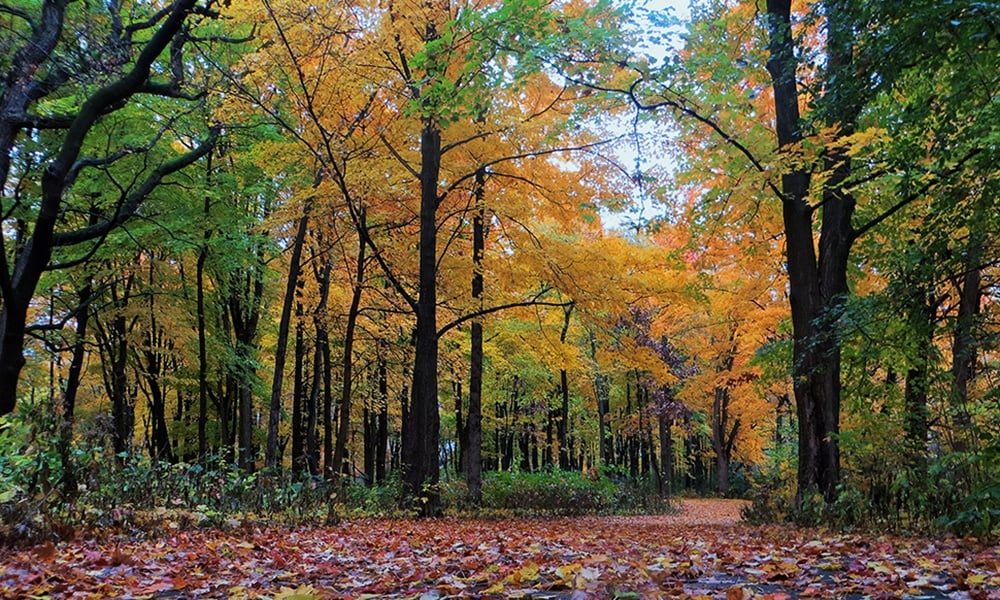
Now that fall’s officially here, we’re starting to see the first signs of color in our forest preserves. So it’s only natural that people want to know what to expect in the way of fall color displays.
Some shrub species, like sumacs, are already displaying their fall reds. A few tree species, such as black walnuts and eastern cottonwoods, have started to change, too, and some have already dropped many of their leaves.
Some maples are also starting to show yellow and orange hues, while other species —including hackberries, elms and honey locusts — are starting to turn yellow. The oaks are usually some of the last of our native trees to change to their rusty orange and brown tones.
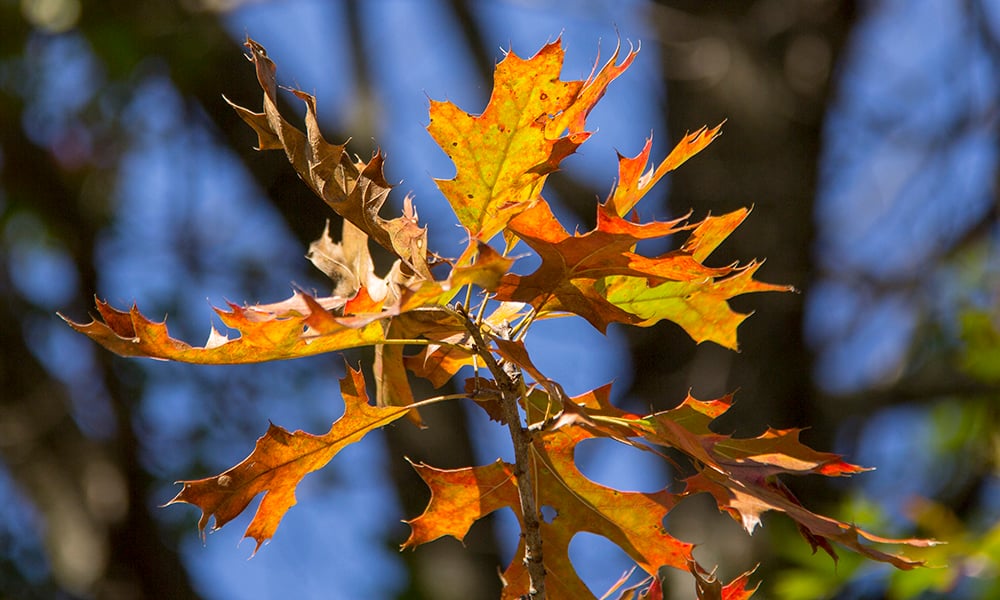
Northern red oak leaves (Quercus rubra)
If they haven’t already started, most of our trees will begin to turn in the coming weeks, and we should be at peak color around Oct. 20, depending on the weather.
Why Leaves Change
A quick science lesson on the factors that trigger and affect the fall color change may help you enjoy this year’s color show more fully and explain why it’s so hard to predict the arrival, length and brilliance of each year’s display.
The fall colors that we enjoy are the result of trees starting to go dormant and conserving their resources for the winter. As the trees prepare to shed their leaves for the season, they stop producing the chemical chlorophyll that helps them turn sunlight into energy and gives them their green color.
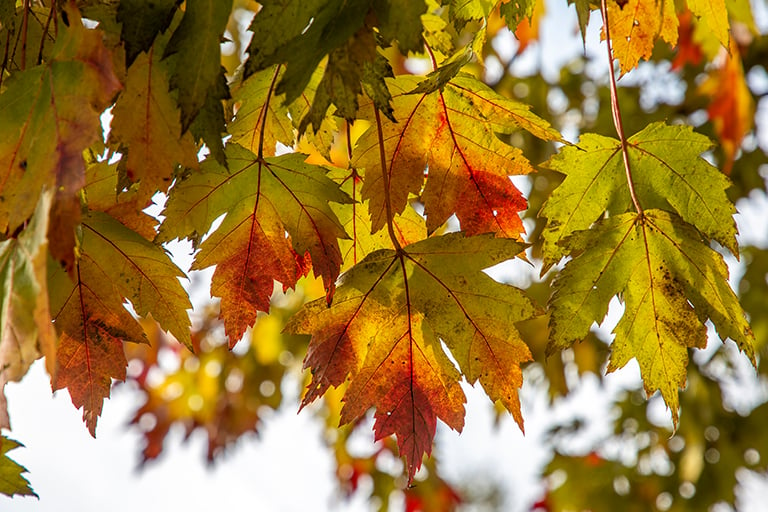
Freeman maple leaves (Acer freemanii)
As the green pigment fades away, it reveals other colors — such as yellows, reds and oranges — that were there all along but couldn’t be seen because the chlorophyll’s green blocked them out.
Many factors affect when trees will start to show their “true” colors. Day length is probably the biggest because shorter days signal to the trees to stop producing chlorophyll.
Sunlight, temperature, moisture and stress also play important roles in fall color.
In general, the brightest fall colors will follow a growing season with ample moisture. Add dry, warm fall days and cool but frostless nights, and you have prime conditions for a spectacular display. (Windy, rainy conditions can inhibit the development of good fall color and cause leaves to drop before they reach their full color potential.)
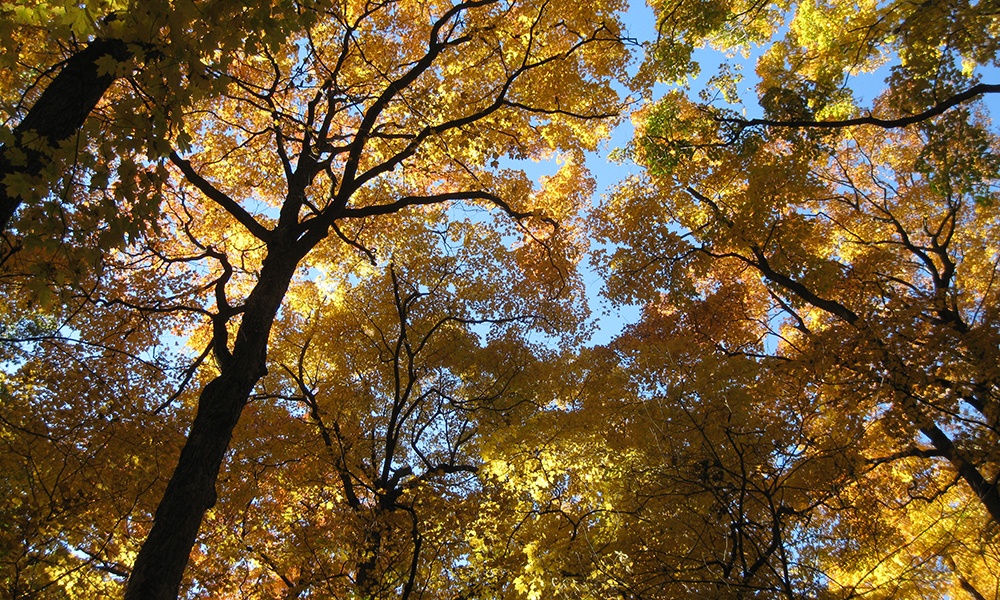
Fall foliage at Maple Grove Forest Preserve
The dry conditions that the county experienced this summer could cause our leaves to change color and drop sooner than average, but a lot will depend on the weather we get in the next several weeks.
These fall-color contributors can vary not only from year to year but also from tree to tree and even within individual trees. Have you ever noticed how the leaves on the outside of a tree tend to change color and fall first? This is because they’re exposed most to sunlight and the signal to shorter days. For this reason, trees deep in forests change color later than those that are out in the open.
Each year us leaf peepers hope for the best, but myriad factors determine whether we’ll have a good color year, and those factors are as hard to predict as the weather! Ready to explore? We’ll leave you with our Fall Faves from the Field to get you started. Enjoy the show!
Scott Kobal
